Topics
Category
Era
Bohemian Flats, Minneapolis
From the 1860s to 1931, thousands of people built homes on the west bank of the Mississippi River as it wends through Minneapolis, just south of St. Anthony Falls. The diverse immigrant community that residents created there—Bohemian Flats—survived seasonal floods and eviction threats until its demolition by the City of Minneapolis. It was sometimes called Slovak Flats and Washington Flats, among other, rougher names. But for the people who lived, worked, and worshipped there, it was simply called home.
Bohemian Flats was one of several “landing place” communities in the Twin Cities where recently arrived, working-class immigrants could speak their languages, find cheap housing, live near workplaces, and begin their lives in America. These neighborhoods reflected the immense inequality of America’s Gilded Age: the rich occupied leafy hilltop neighborhoods like Lowry Hill and Summit Avenue, while many poor people, new immigrants, and laborers lived in leftover land, including floodplains, slums, and industrial areas. As they were in Connemara Patch, West Side Flats, and Swede Hollow, houses in Bohemian Flats were small and crowded. They were also built close together, with room between each only for gardens, woodpiles, animal pens, and outhouses.
The labor of Bohemian Flats residents was essential for Minneapolis’ burgeoning industries, including flour and lumber milling, beer brewing, and construction. Factories sat just a few hundred yards up the hill from the workers’ homes. The streets that ran through the neighborhood were named after residents’ professions: Cooper, Mill, and Wood. Many performed unpaid labor: raising children, running households, tending gardens, and keeping dogs, cats, chickens, cows, ducks, and pigs. The 1900 census recorded about 1,200 Slovaks, Swedes, Czechs (Bohemians), Irish, Norwegians, Poles, Germans, and Austrians living there, among other nationalities.
Minneapolis did not extend sewage service to the flats, and it struggled to build and maintain water infrastructure. Thus, the neighborhood suffered from poor sanitation and infectious disease, including diphtheria and typhoid. In 1889, residents collected funds to build a church of their own in the flats, the Slovak Evangelical Lutheran Church of St. Emmanuel. The community also gathered in the flats’ one large apartment building, grocery stores, and saloon. The Westminster Presbyterian Church opened a charitable mission in the neighborhood, too, and in 1913 it built a chapel (later the Cedar–Riverside People’s Community Center) at Twentieth and Riverside Avenue, just “up the hill” from the flats.
The ever-present Mississippi River profoundly shaped the lives of the people who lived in Bohemian Flats. Each spring could present floods that sometimes swept away animals, homes, possessions, and even people. The river also provided. Flotsam and jetsam discarded upstream included logs, boards, and produce that residents collected. People used boats and built skeleton piers into the river to collect the goods. They fished, ice skated, and used the Mississippi for laundry and drinking water. Generations of artists drew inspiration from the lifestyle and picturesque, colorful houses of the flats. Modernist painter Vaclav Vytlacil rented a studio in the neighborhood and brought art students from the Minneapolis School of Art there.
Ownership of the flats was contested. Title was variously claimed by Senator W. D. Washburn, companies, developers, and residents. Some residents paid rent to landlords, others were squatters, and some considered themselves homeowners. The threat of evictions from companies, landlords, and the city was constant.
In 1893, residents won a lawsuit against the Minneapolis Gas Light Company for discharging refuse into their soil and wells. They also protested the expansion of a city trash dump near their homes. John Medvec, a sixty-something Bohemian Flats resident, led several neighbors in court against a developer who claimed he owned the flats and demanded rent.
In November 1923, a judge ruled that the residents had to pay rent or face eviction. The next month, Minneapolis police began to forcibly evict people from their homes, resulting in a pitched standoff. Led by the women of the neighborhood, residents resisted eviction by refusing to budge from their doorways or threatening officers with brooms. Just before events escalated, a judge ordered that the evictions halt.
The city of Minneapolis had used eminent domain powers in 1915 to seize land in the southern part of the flats to build a barge terminal. Then, in 1929, it began condemnation proceedings to demolish most of the remaining houses. For the next two years, city leaders issued eviction notices and forced nearly all the residents of Bohemian Flats to abandon their homes to make way for a coal terminal. After 1931, fourteen homes remained on and around the flats; the final structure was demolished in 1963.
.Bibliography
Chrislock, C. Winston. “The Czechs.” In They Chose Minnesota, edited by June Drenning Holmquist. Minnesota Historical Society Press, 1981, 335–51.
Hines, Rachel. “A Home Worth Fighting For: The Evictions At The Bohemian Flats.” Open Rivers: Rethinking The Mississippi no. 1 (Fall 2015): 43–46.
https://openrivers.lib.umn.edu/article/a-home-worth-fighting-for-the-evictions-at-the-bohemian-flats
Millett, Larry. Lost Twin Cities. Minnesota Historical Society Press, 2002.
Murray, Shannon E. “Making a Model Metropolis: Boosterism, Reform, and Urban Design in Minneapolis, 1880–1920.” PhD diss., University of Calgary, 2015.
Secora. Jean. “One Hundred Years Later or from Bohemia in Central Europe to the Bohemian Flats in Minneapolis.” Hennepin History 43, no. 1 (1984): 3–23.
https://digitalcollections.hclib.org/digital/collection/p17208coll13/id/7175/rec/21
Related Resources
Primary
“A Riot Averted: Bohemians on the Flats Indignant and Demonstrative.” St. Paul Daily Globe, June 14, 1885.
“Another Big Dam Is to Be Constructed.” St. Paul Daily Globe, November 3, 1897.
du Barry, Marie. “Bohemia on the Mississippi.” St. Paul Daily Globe, June 19, 1898.
“‘Bohemian Flats’ Deserted in Wake of Flood.” Minneapolis Morning Tribune, March 27, 1920.
“Bohemian Flats’ Difficulty.” Daily Morning Tribune, June 28, 1885.
“Bohemians Do Protest: Want Washington Avenue Flats Given Another Name.” Minneapolis Tribune, August 5, 1905.
“City Trolley Line is Urged of Council.” Minneapolis Morning Tribune, March 7, 1922.
“Evicting Tenants: A Number of Settlers in Bohemia Evicted by the Sheriff.” Minneapolis Tribune, December 24, 1890.
“Health Commissioners.” St. Paul Daily Globe, May 24, 1892.
“Our New Americans” Minneapolis Morning Tribune, August 27, 1916.
“Set in the Street: Two Families Forcibly Moved Out on a Bitterly Cold Day.” St. Paul Daily Globe, December 24, 1890.
“Their Homes Safe.” Minneapolis Tribune, May 16, 1889.
“Verdict for the Plaintiffs.” St. Paul Daily Globe, November 15, 1893.
“Vytlacil Paintings Are on Exhibition.” Minneapolis Evening Tribune, September 8, 1918.
“Wives Hold River Flat Homes When Police Attempt Eviction.” Minneapolis Morning Tribune, May 25, 1923.
Secondary
Bushnell, John Edward. The History of Westminster Presbyterian Church of Minneapolis, Minnesota, 1907–1937. Lund Press, 1938.
Rølvaag, O.E. The Boat of Longing. Minnesota Historical Society Press, 1985.
Writers’ Program of the Works Progress Administration. The Bohemian Flats. St. Paul: Minnesota Historical Society Press, 1986 (2004 reprint).
Web
Hines, Rachel. “The Bohemian Flats.” ArcGIS Story Map.
https://www.arcgis.com/apps/StorytellingTextLegend/index.html?appid=d7962407ac4a4211bf59d35148a64363
Related Images

“Christmas Eve on the Flats”
Holding Location
Articles
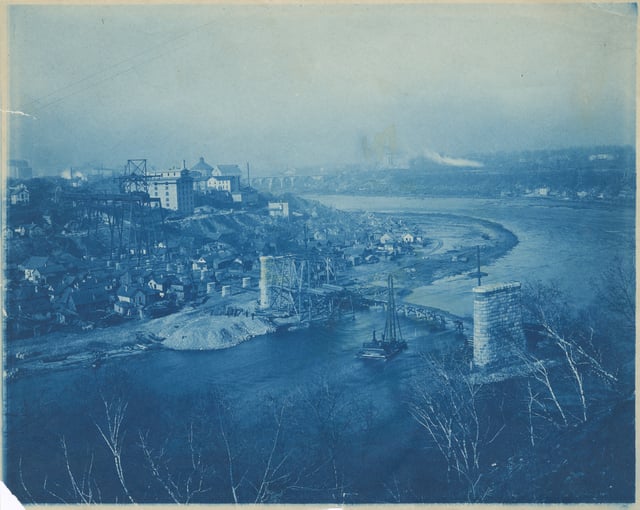
Northern Pacific Railway bridge under construction, 1880
Holding Location
Articles
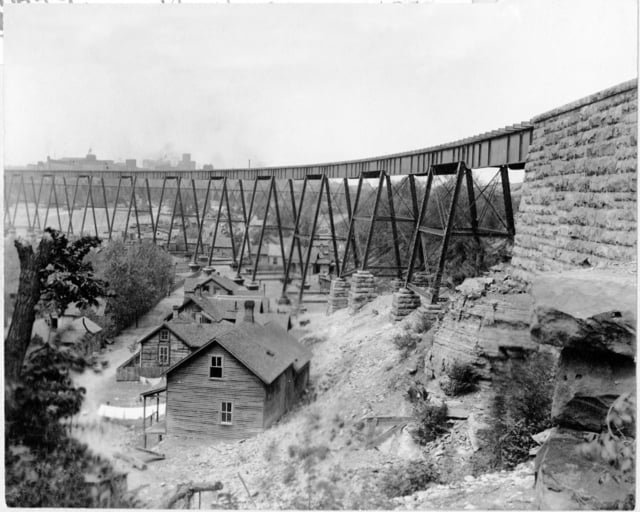
View of Bohemian Flats below the Minneapolis Western Railroad bridge
Holding Location
Articles

Bohemian Flats, ca. 1890
Holding Location
Articles

Bohemian Flats, 1895
Holding Location
Articles
More Information
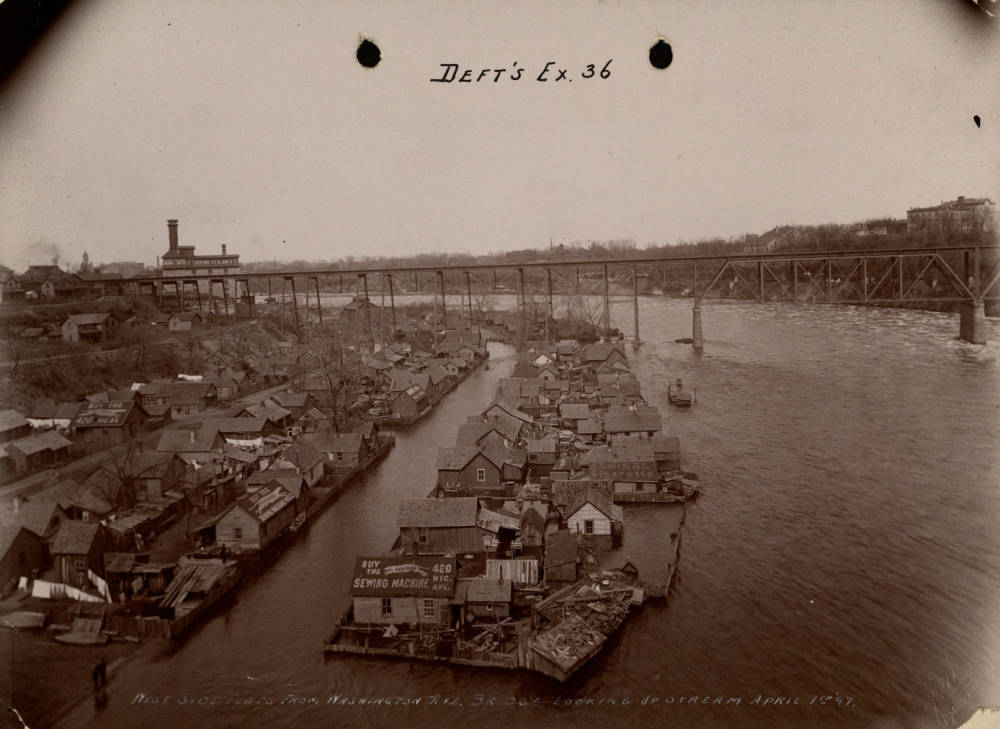
Bohemian Flats during a springtime flood, 1897
Holding Location
Articles
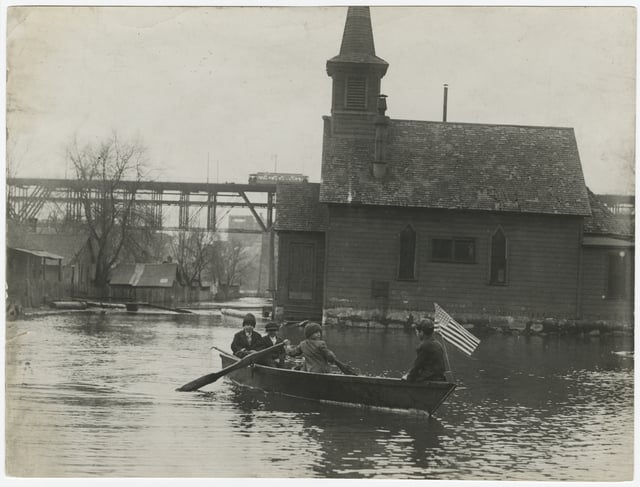
Boys rowing a boat down a flooded street in Bohemian Flats
Holding Location
Articles
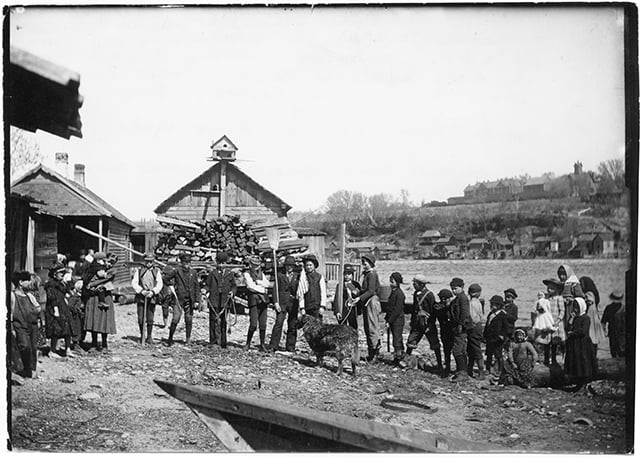
Children in Bohemian Flats, 1890s
Holding Location
Articles
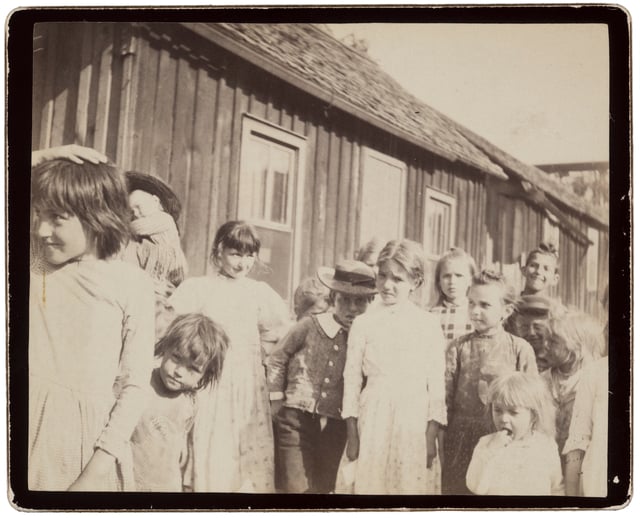
Polish and Bohemian children in Bohemian Flats, ca. 1900
Holding Location
Articles
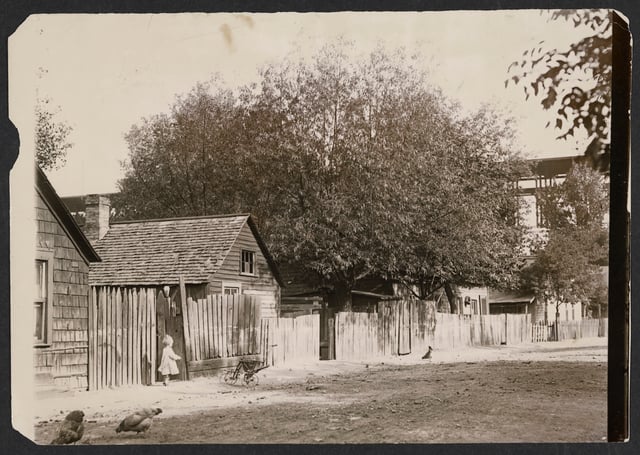
Homes in Bohemian Flats, ca. 1902
Holding Location
Articles
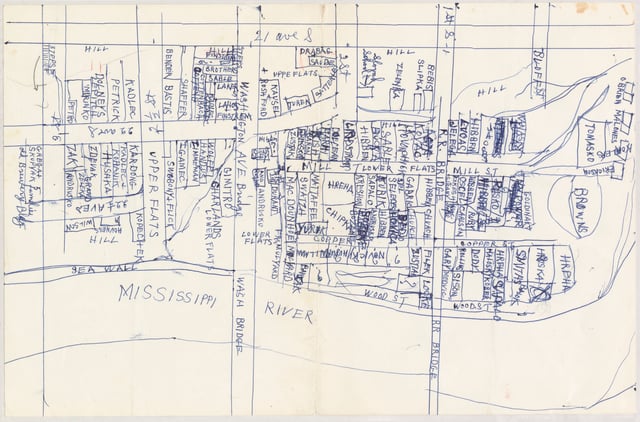
Sketched map of Bohemian Flats
Holding Location
Articles
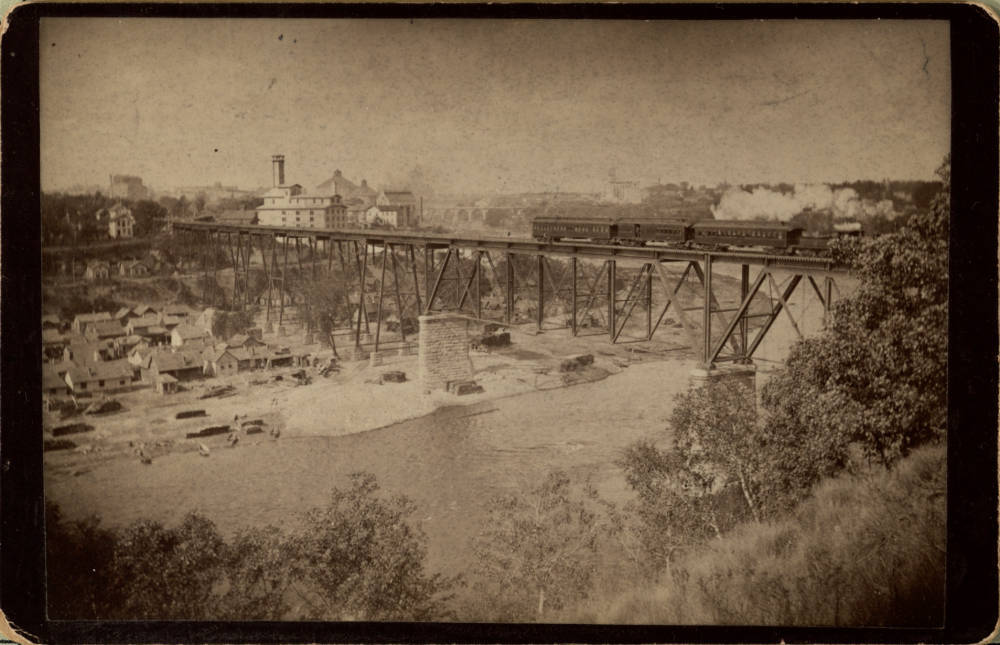
Northern Pacific Railroad Bridge above Bohemian Flats
Holding Location
Articles

Bohemian Flats, ca. 1910
Holding Location
Articles

Village Scene
Holding Location
Articles
More Information
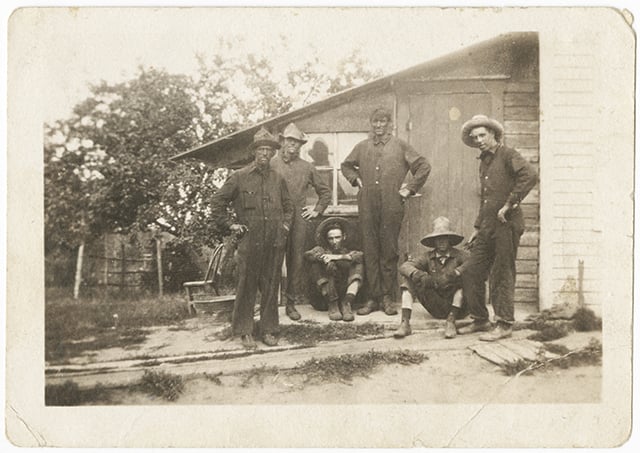
Threshing crew at Zadenak's, Bohemian Flats
Holding Location
Articles
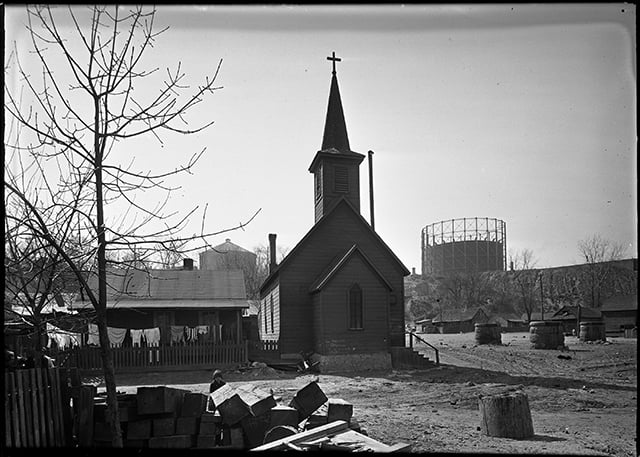
Immanuel Evangelical Slovak Lutheran Church
Holding Location
Articles
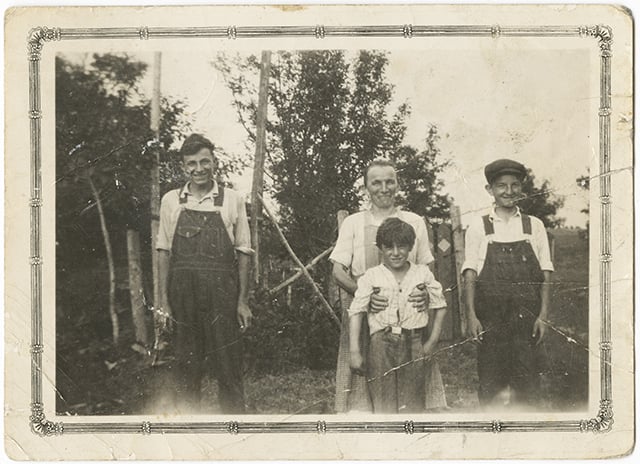
George, Mary, and Henry Zadenak with Jimmy Andrusko
Holding Location
Articles
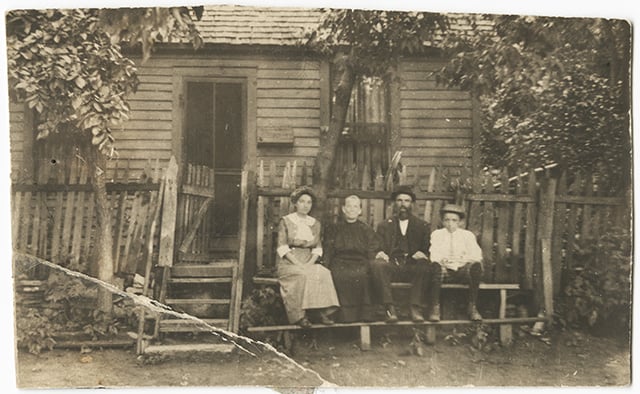
Grandpa and Grandma Zelenka, ca. 1926–1931
Holding Location
Articles
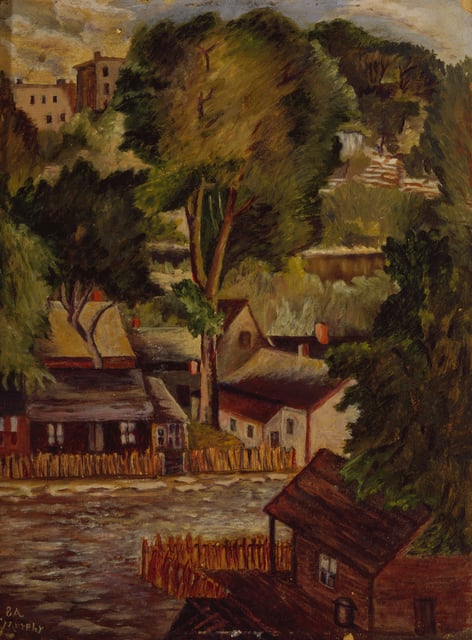
“River Flats”
Holding Location
Articles
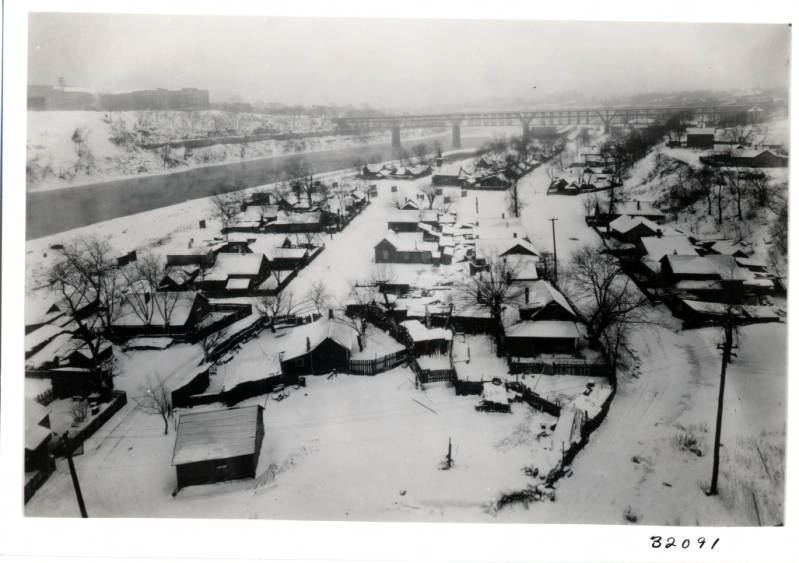
Bohemian Flats, 1942
Holding Location
Articles
More Information

Bohemian Flats, 1949
Holding Location
Articles
Related Articles
Turning Point
In 1915, the City of Minneapolis uses eminent domain laws to condemn Bohemian Flats properties south of the Washington Avenue Bridge and make way for a barge terminal. Sixteen years later, the neighborhood was largely abandoned as the city condemned dwellings and evicted residents.
Chronology
1860s
1884
1885
1892
1893
1897
1915
1917
1923
1931
1963
Bibliography
Chrislock, C. Winston. “The Czechs.” In They Chose Minnesota, edited by June Drenning Holmquist. Minnesota Historical Society Press, 1981, 335–51.
Hines, Rachel. “A Home Worth Fighting For: The Evictions At The Bohemian Flats.” Open Rivers: Rethinking The Mississippi no. 1 (Fall 2015): 43–46.
https://openrivers.lib.umn.edu/article/a-home-worth-fighting-for-the-evictions-at-the-bohemian-flats
Millett, Larry. Lost Twin Cities. Minnesota Historical Society Press, 2002.
Murray, Shannon E. “Making a Model Metropolis: Boosterism, Reform, and Urban Design in Minneapolis, 1880–1920.” PhD diss., University of Calgary, 2015.
Secora. Jean. “One Hundred Years Later or from Bohemia in Central Europe to the Bohemian Flats in Minneapolis.” Hennepin History 43, no. 1 (1984): 3–23.
https://digitalcollections.hclib.org/digital/collection/p17208coll13/id/7175/rec/21
Related Resources
Primary
“A Riot Averted: Bohemians on the Flats Indignant and Demonstrative.” St. Paul Daily Globe, June 14, 1885.
“Another Big Dam Is to Be Constructed.” St. Paul Daily Globe, November 3, 1897.
du Barry, Marie. “Bohemia on the Mississippi.” St. Paul Daily Globe, June 19, 1898.
“‘Bohemian Flats’ Deserted in Wake of Flood.” Minneapolis Morning Tribune, March 27, 1920.
“Bohemian Flats’ Difficulty.” Daily Morning Tribune, June 28, 1885.
“Bohemians Do Protest: Want Washington Avenue Flats Given Another Name.” Minneapolis Tribune, August 5, 1905.
“City Trolley Line is Urged of Council.” Minneapolis Morning Tribune, March 7, 1922.
“Evicting Tenants: A Number of Settlers in Bohemia Evicted by the Sheriff.” Minneapolis Tribune, December 24, 1890.
“Health Commissioners.” St. Paul Daily Globe, May 24, 1892.
“Our New Americans” Minneapolis Morning Tribune, August 27, 1916.
“Set in the Street: Two Families Forcibly Moved Out on a Bitterly Cold Day.” St. Paul Daily Globe, December 24, 1890.
“Their Homes Safe.” Minneapolis Tribune, May 16, 1889.
“Verdict for the Plaintiffs.” St. Paul Daily Globe, November 15, 1893.
“Vytlacil Paintings Are on Exhibition.” Minneapolis Evening Tribune, September 8, 1918.
“Wives Hold River Flat Homes When Police Attempt Eviction.” Minneapolis Morning Tribune, May 25, 1923.
Secondary
Bushnell, John Edward. The History of Westminster Presbyterian Church of Minneapolis, Minnesota, 1907–1937. Lund Press, 1938.
Rølvaag, O.E. The Boat of Longing. Minnesota Historical Society Press, 1985.
Writers’ Program of the Works Progress Administration. The Bohemian Flats. St. Paul: Minnesota Historical Society Press, 1986 (2004 reprint).
Web
Hines, Rachel. “The Bohemian Flats.” ArcGIS Story Map.
https://www.arcgis.com/apps/StorytellingTextLegend/index.html?appid=d7962407ac4a4211bf59d35148a64363






















